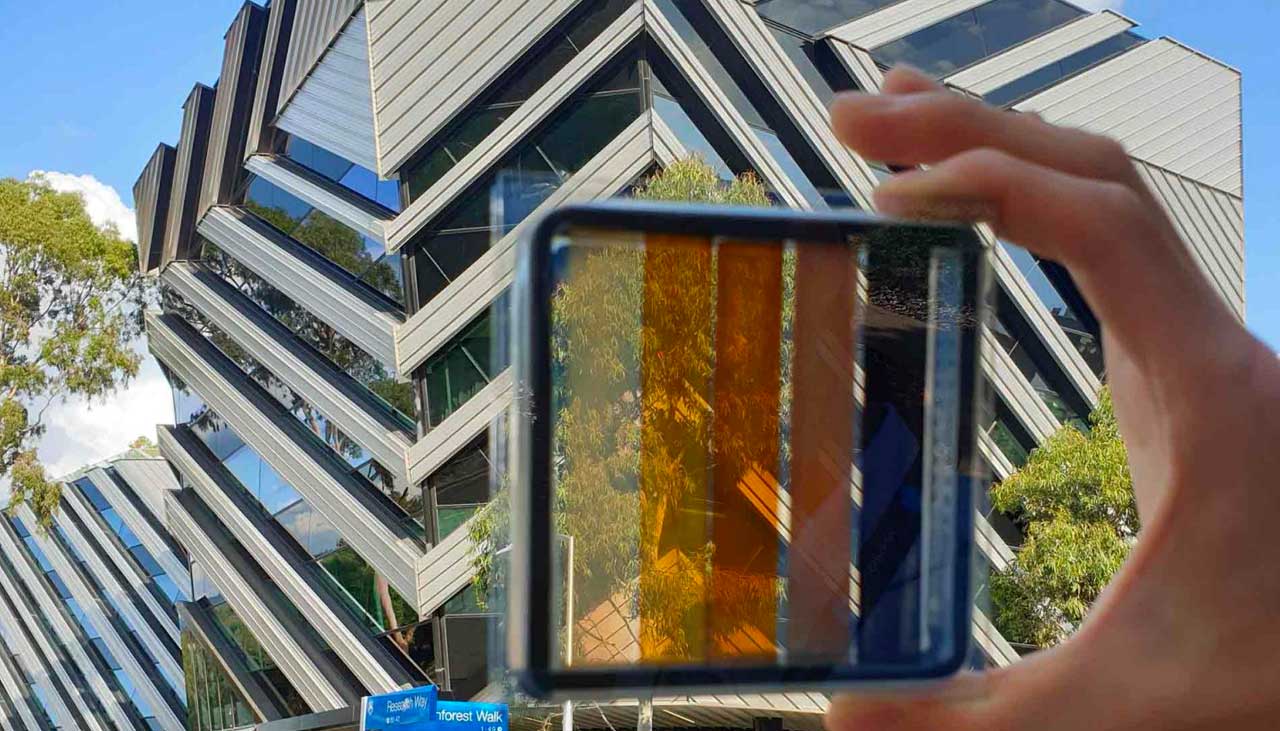Summary
The Monash University Building Integrated PV Study project will focus on the development of high efficiency, semi-transparent perovskite photovoltaics (PV) for use as building integrated photovoltaic (BIPV) windows.
Key results
The objective of this project was to demonstrate that perovskites, a rapidly emerging class of photoabsorber material, can be incorporated into semi-transparent solar cells at a scale, efficiency and lifetime that make them suitable for building integrated applications.
The application chosen for this project was a building integrated photovoltaics (BIPV) – semi-transparent solar cells integrated into a framing system – essentially a tinted window that can generate electricity with the light that it absorbs. To date, there has not been a solar cell technology that combines suitable levels of efficiency and light transmission at an adequate price point to allow for broad adoption.
This project demonstrated, at laboratory scale, that a perovskite-based solar cell could meet the electricity generating and aesthetic (namely average visible transmittance (AVT) and colour) requirements for such a product.
This project achieved world-record efficiencies across a range of AVTs, and considerably improved upon the lifetime of comparable devices made to date. The project also used desktop modelling to better understand the potential of this technology across a number of human-inhabited environments. The study showed that the wide deployment of conventional rooftop solar coupled with building integrated. (i.e. wall and window mounted) PV can produce the majority of electricity produced by a city.
Learn more
How the project works
The Monash University Building Integrated PV Study focuses on achieving high-efficiency and stable semi-transparent perovskite solar cells through dedicated activities across three main work packages:
- Semi-Transparent Electrode and Device Development
Goal: Develop semi-transparent electrodes that enable lab-scale high efficiency perovskite devices to be fabricated. - Semi-Transparent Solar Cell Module Development
Goal: Investigate optimised semi-transparent electrodes in mini-modules. - Encapsulation and Accelerated Testing
Goal: Assess and enhance the stability of semi-transparent solar cell devices and modules within laminated and double-glazed window configurations.
Area of innovation
Building integrated photovoltaics will continue to develop in market share as higher energy efficiency building standards are introduced. Ultra-thin perovskite layers with semi-transparent electrodes are one of the most promising candidates for developing semi-transparent solar cell windows. However, suitable semi-transparent electrode configurations that enable thermal and chemical stability of the device are still required for this to be realised. This project will address these challenges by developing solar cells with novel electrodes that are stable, maximise transparency and conductivity, are cost-effective, and can be feasibly scaled for commercialisation.
Benefit
The Monash University Building Integrated PV Study project will develop new knowledge, IP and skills in the area of building integrated solar cells. This technology will be well placed for commercialisation because of its competitive advantages over existing solutions. It will increase the skills and capacity within an emerging solar cell technology by supporting postdoctoral, masters and PhD positions. Through a dedicated knowledge sharing approach, it will also broadly engage and educate government, industry, academia and the community on the technology, and create further awareness on the necessity of renewable energy uptake in Australia.







